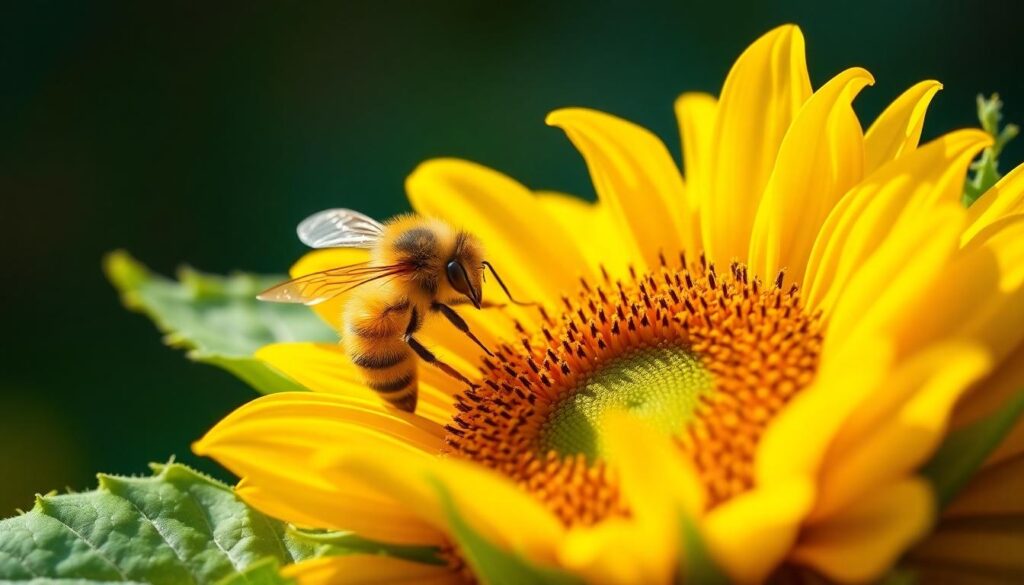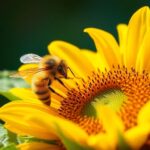Buzzing with curiosity about bee riddles? We’ve gathered the most mind-tingling, honey-sweet brain teasers that will have you and your friends laughing, thinking, and learning about our favorite yellow-and-black pollinators.
From clever wordplay to educational puzzles, these bee riddles offer the perfect blend of fun and facts. They’re ideal for classrooms, family game nights, or simply brightening someone’s day with a touch of bee-themed humor. Whether you’re a beekeeper, nature enthusiast, or just someone who enjoys a good riddle, you’ll find something to love in our carefully curated collection.
10 Buzz-Worthy Riddles About Bees That Will Test Your Wit
- What type of bee can’t be understood?
A mumble bee! This playful riddle highlights how bees communicate through various sounds and movements, though fortunately, real bees don’t actually mumble when they’re sharing information about food sources with their hive mates.
- What do you call a bee that’s having a bad hair day?
A frisbee! While bees don’t actually have hair like humans, they do have tiny branched hairs covering their bodies that help collect pollen as they move from flower to flower.
- Why do bees hum?
Because they don’t know the words! This humorous riddle refers to the distinctive buzzing sound bees make with their wings, which beat approximately 230 times per second creating their characteristic “hum.”
- What do you call a bee born in May?
A maybe! This riddle plays on the pronunciation similarity between “May bee” and “maybe,” though in reality, queen bees typically begin laying eggs in early spring with worker bee populations peaking during summer months.
- How does the queen bee get around her hive?
She’s throne! This clever wordplay between “throne” and “flown” references the special treatment queen bees receive in the hive, where they’re constantly attended to by worker bees.
- What’s a bee’s favorite novel?
The Great Gats-bee! Literary bees might appreciate this play on F. Scott Fitzgerald’s famous work, though actual bees communicate through complex dances rather than reading literature.
- Where do bees keep their money?
In a honey box! While bees don’t use currency, they do store their valuable honey resources in hexagonal cells they construct with precision that would impress any engineer.
- Why was the bee’s hair sticky?
Because she used a honeycomb! This riddle plays on the dual meaning of “comb,” though bees actually use their honeycomb structures for brood rearing and honey storage rather than grooming.
- What did the bee say to the flower?
Hello, honey! This sweet riddle reflects the important relationship between bees and flowers, a partnership that has evolved over millions of years resulting in the pollination of approximately 80% of flowering plants worldwide.
- How do bees get to school?
On the school buzz! This transportation-themed riddle makes a clever connection between bus and buzz, though real bees learn everything they need through instinct and communication within the hive rather than formal education.
The Sweet Challenge: Why Bee Riddles Sharpen Your Mind

Bee-themed riddles do more than just entertain—they activate cognitive processes remarkably similar to those observed in bees learning complex tasks in their environment. When we solve these clever puzzles, we’re captivating our brains in ways that mirror how these industrious insects navigate their industry and solve problems collectively.
Educational Benefits of Solving Bee-Themed Riddles
Problem-solving abilities improve significantly when we regularly tackle bee-themed riddles. Studies show bumblebees can master multi-step puzzles through social learning and observation, demonstrating cognitive abilities we once thought impossible in insects. Our brains follow similar pathways when working through riddles, activating memory centers and pattern recognition systems that strengthen with practice.
Cognitive flexibility expands as we navigate the twists and turns of bee-related brain teasers. Research reveals honeybees can count up to five items with minimal neural resources, showcasing how even simple systems achieve complex cognition. This same principle applies to human learning—when we solve riddles, we’re training our minds to think adaptively and creatively.
Memory pathways strengthen through repeated engagement with clever bee conundrums. Bees retain learned behaviors over extended periods, creating lasting neural connections. Similarly, our recall abilities and information processing speed improve with each riddle we solve, building mental resilience that benefits many aspects of daily life.
How Riddles Connect Us to the Natural Industry
Bee riddles create meaningful bridges between abstract thinking and ecological awareness. Understanding the remarkable problem-solving abilities of bees—like their capacity to move balls to access rewards through trial and observation—helps us appreciate these creatures beyond their honey-making skills.
Learning about bee behavior through playful wordplay reinforces our connection to these vital pollinators. When riddles reference pollination or hive mechanics, they subtly strengthen our ecological literacy while entertaining us. This knowledge becomes particularly valuable considering bees’ essential role in global food systems and biodiversity.
Social learning happens in both bee communities and human groups sharing riddles. Bumblebees observe and learn from each other to solve complex tasks, mirroring how we share and collectively solve bee riddles. This parallel learning process highlights the surprising similarities between human and bee cognition, fostering greater respect for these remarkable insects.
Classic Honeycomb Puzzlers: Traditional Bee Riddles
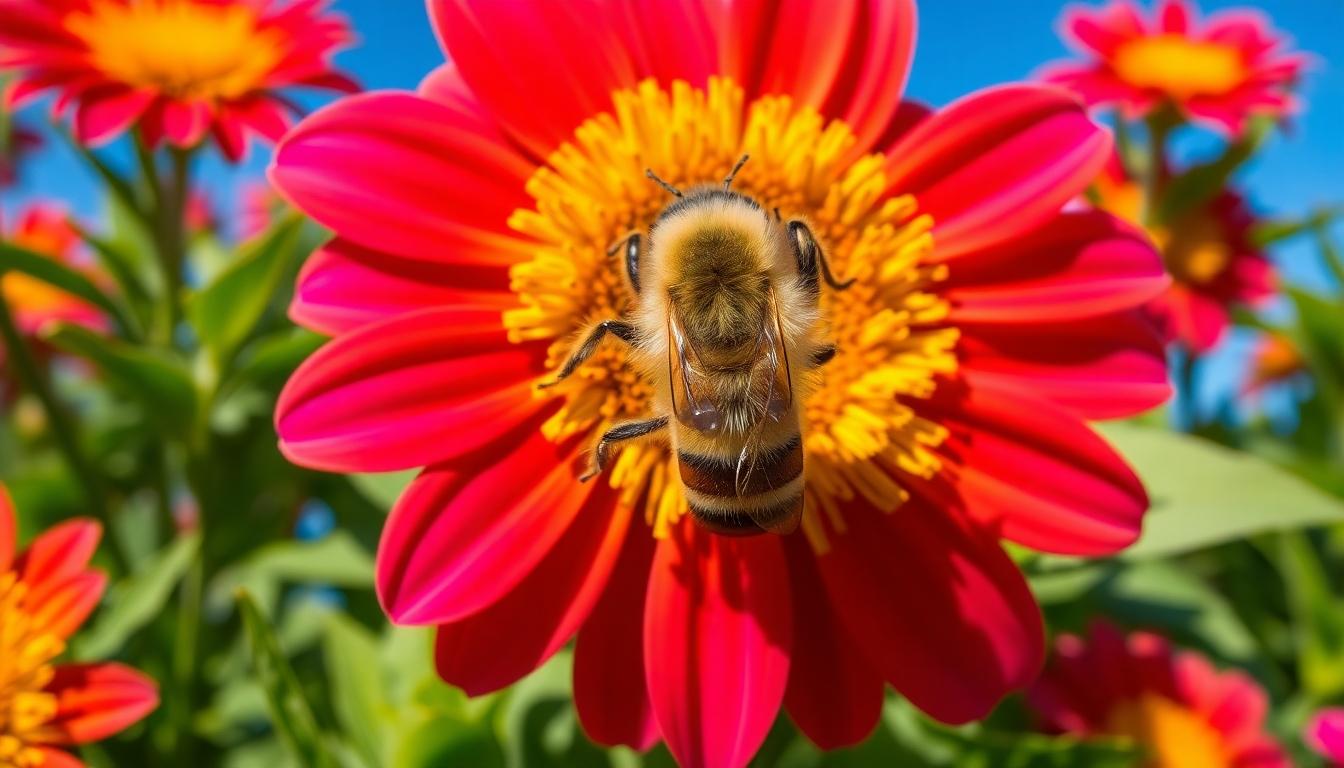
Traditional bee riddles celebrate the unique characteristics of these remarkable insects and their social structures. These puzzles have delighted nature enthusiasts for generations while highlighting the bee’s crucial ecological role.
- The Queen’s Rule: I may be royal, but I don’t wear a crown. Without me, the hive would fall apart. What am I? Answer: The Queen Bee.
- Busy Bees: I live with a queen and work every hour, I’m striped black and yellow and love every flower. What am I? Answer: A Bee.
Ancient Bee Riddles From Around the Industry
The significance of bees stretches back through human history, with these industrious insects holding prominent positions in many ancient cultures. In ancient Egypt, bees symbolized rebirth and life, appearing in hieroglyphics and royal iconography. While exact ancient bee riddles haven’t survived intact through centuries, the reverence for bees manifested in various cultural expressions worldwide. Ancient civilizations recognized the bee’s importance in agriculture and religious symbolism, often incorporating their imagery into myths and folklore that celebrated their diligence and productive nature.
Modern Twists on Traditional Bee Brain Teasers
Today’s bee riddles often incorporate contemporary language while honoring traditional themes about pollination and honey production:
- Nature’s Gold: Cloaked in nature’s gold, secrets of the flowers I hold. Without me, their tales untold. What am I? Answer: A Bee.
- Golden Honey: I buzz to my hive where I make golden honey, I fly through the flowers when the weather is sunny. What am I? Answer: A Bee.
- Dance of Life: My dance is a map, my sting, a warning. In the industry of flowers, I’m never boring. What am I? Answer: A Bee.
These modern riddles cleverly reference the bee’s waggle dance communication, their role in pollination, and their honey-making abilities, making them perfect for educational settings where learning about bee behavior combines with wordplay fun.
Clever Wordplay: Pun-Filled Bee Riddles for All Ages
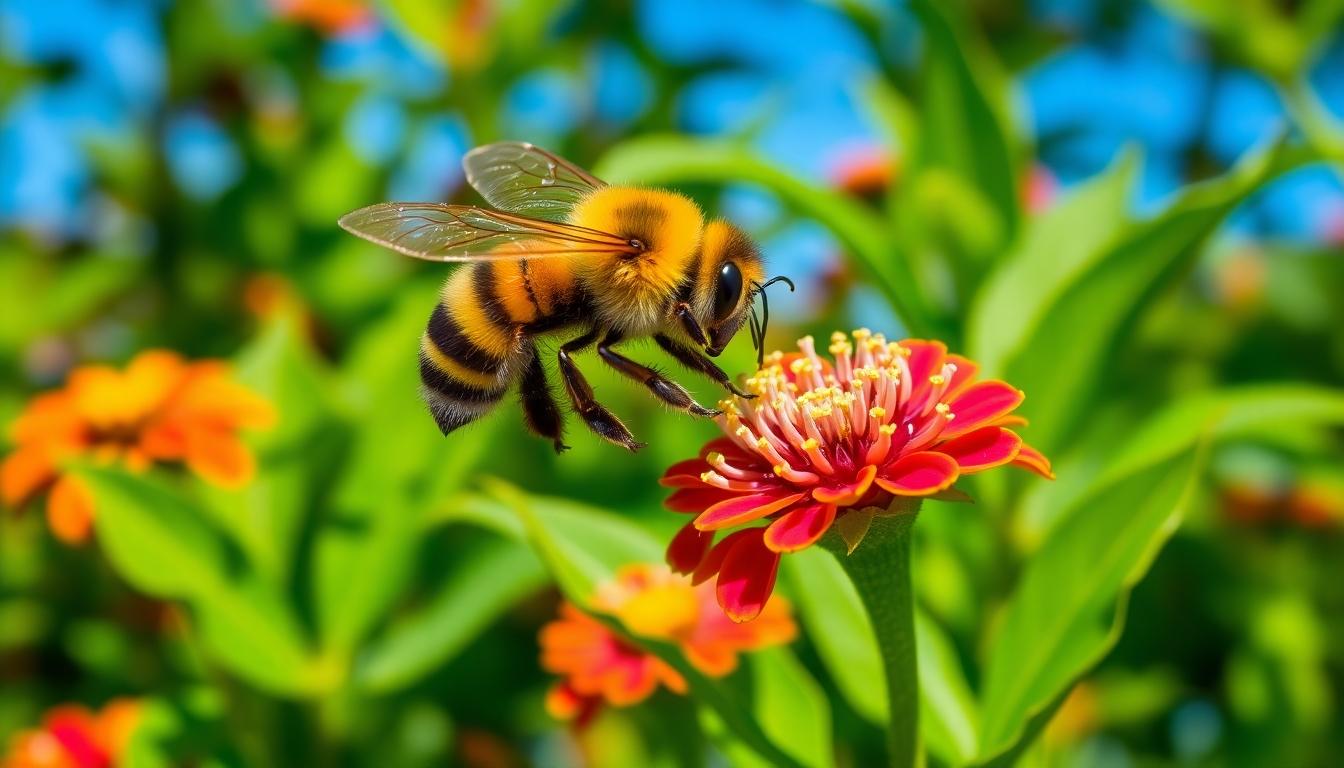
Bee riddles buzzing with puns offer entertainment while cleverly highlighting these incredible insects’ characteristics and behaviors. These witty wordplays work wonderfully for family gatherings, classrooms, or any occasion where a touch of honey-sweet humor is needed.
Family-Friendly Bee Jokes and Riddles
Kids love simple yet captivating bee riddles that introduce them to the intriguing area of these pollinators. “What buzzes around your head, making honey before bed?” presents an easy challenge with “Bee” as the answer, perfect for younger children just beginning to appreciate wordplay. Another delightful riddle asks, “I wear a fuzzy suit, and my job is never done. Helping flowers grow, under the sun” – again with “Bee” as the answer. These playful questions highlight the essential pollination role bees perform while keeping the language accessible for all ages. Families can enjoy these together, combining learning with laughter as children discover more about these important insects through fun verbal puzzles.
Advanced Bee Wordplay for Puzzle Enthusiasts
Sophisticated riddle enthusiasts will appreciate bee-themed brain teasers that incorporate deeper knowledge about hive dynamics and bee behavior. “I may be royal, but I don’t wear a crown. Without me, the hive would fall apart” cleverly references the queen bee’s crucial role in colony survival. Metaphorical riddles like “A creature that dances in the light of day, finding flowers, a sweet buffet” allude to the famous waggle dance bees use to communicate flower locations. Double entendres add another layer of complexity, such as “I asked the bee how it stays so fit. It said, ‘I always work out with my hive!'” Professional wordsmiths might enjoy role-based wordplay like “The bee opened a bakery, but I warned it not to get too sweet on the customers!” These more complex riddles reward those familiar with bee biology and behavior, offering satisfaction when the clever connections between the clues and answers become clear.
Scientific Bee Riddles: Learning While You Laugh

Test your knowledge of bee biology with these scientifically accurate riddles that combine humor with fascinating facts about our buzzing friends.
Pollination and Honey Production Brainteasers
Ready to be stumped by some sweet science? Try solving this one: “I dance for knowledge, not for nectar—my steps teach others to move a ball. What skill am I showing?” The answer reveals observational learning, as bees can learn to complete reward-based tasks by watching their peers.
Bees aren’t just collectors; they’re natural chemists too. Consider this riddle: “Worker by day, alchemist by night—I turn floral gifts into liquid gold. What’s my secret?” The solution points to the remarkable enzymatic conversion of nectar into honey, a process unique to these industrious insects.
For spatial thinkers, here’s a challenge: “Tiny mathematician—I calculate the shortest flight between blooms. What’s my hidden talent?” This highlights bees’ efficient foraging through spatial memory and path optimization, allowing them to maximize nectar collection while minimizing energy expenditure.
Queen Bee and Hive Hierarchy Riddles
Investigate into the social structure of the hive with this brain teaser: “My throne is wax, my subjects thousands—yet I’ll never leave the nest. Who rules this matriarchy?” The answer, of course, is the queen bee, who serves as the reproductive centerpiece of the entire colony.
Worker bees get their own riddle too: “We guard, clean, and gather—all sisters, none mothers. What role defines us?” This refers to sterile female worker bees, the tireless maintainers of colony stability who perform countless essential tasks.
Cognitive abilities feature prominently in bee-centered puzzles: “Two steps to sweetness, one mind to teach—what can’t I solve alone, but master by watching?” This riddle highlights how bees tackle multi-step puzzle boxes requiring social demonstration for success, demonstrating their impressive learning capabilities even though having tiny brains.
For anatomy enthusiasts, try: “I carry pollen on my legs, yet never wear pants. What’s my golden tool?” The answer reveals the specialized pollen baskets (corbiculae) found on bees’ hind legs, perfectly designed for efficient pollen transport back to the hive.
Creating Your Own Bee-Themed Riddles: Tips and Tricks
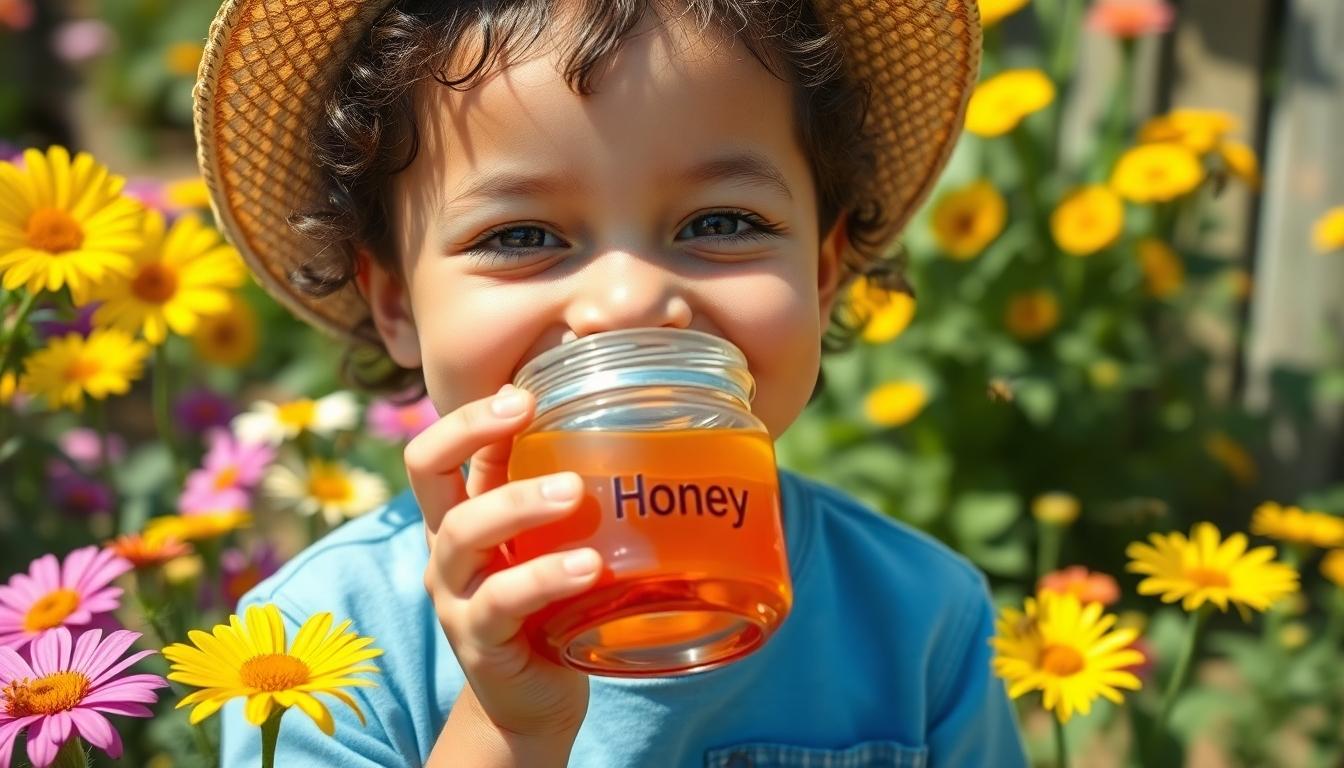
Use Rhyme and Rhythm
Rhyming patterns make bee riddles more memorable and captivating. We’ve found that simple rhyming couplets work particularly well when crafting bee-themed brain teasers. Try creating patterns like “I buzz to my hive where I make golden honey / I fly through the flowers when the weather is sunny” to establish a pleasing rhythm. Rhythmic structures also help riddles stick in people’s minds, making them more likely to be shared. Short, bouncy phrases such as “I’m small but mighty, with wings that hum / Collecting nectar for days to come” create an immediate appeal that draws listeners in.
Incorporate Clever Wordplay
Bee puns and double meanings add humor and challenge to your riddles. We recommend using bee-related terms that have multiple interpretations, such as “How do bees make money? They cell their honey!” Playing with words like “bee” (be), “hive” (high), and “honey” creates captivating linguistic puzzles. Double meanings work exceptionally well in bee riddles, as in “I have a queen, but I’m not royalty” – which hints at the hive structure without directly mentioning bees. Creative wordplay turns simple facts about bees into delightful mental challenges that entertain while educating.
Highlight Unique Bee Traits
Focus on distinctive characteristics that make bees instantly recognizable. We suggest emphasizing their striped appearance with riddles like “I wear stripes, but I’m not a tiger” to give solvers clear visual clues. Behavioral traits provide another rich source of riddle material, particularly their pollination activities. Descriptions such as “I carry pollen back to my hive / I’m a buzzing worker who keeps plants alive” highlight their ecological importance while offering just enough mystery to challenge the solver.
Focus on Hive Structure and Society
The complex social organization of bees offers fascinating riddle material. We can create compelling puzzles by referencing the queen, worker relationships, and honeycomb architecture. Hexagonal patterns, honey production, and the hierarchy within the hive all provide unique angles for creative riddles. Try formulations like “My home is a hive, my job’s never done / I make something sweet you can spread on a bun” to incorporate multiple bee-related concepts. The distinct roles within a colony—from the queen to drones to workers—create natural material for riddles that require solvers to think about bee society.
Connect to Ecological Importance
Highlighting the vital role bees play in our environment adds educational value to your riddles. We’ve seen that effective bee riddles often reference their pollination activities and environmental contributions. Describing bees as “spreading life’s magic” or “helping plants grow” emphasizes their ecological significance while maintaining the mystery needed for a good riddle. This approach not only entertains but also raises awareness about bee conservation, making your riddles both fun and meaningful.
Bee Riddle Resources: Books, Websites, and Apps to Explore

Online Platforms
RiddlesAcademy offers an extensive collection of “Buzz-Worthy Riddles About Bees” that appeal to puzzle enthusiasts of all ages. Their carefully curated content combines educational value with entertainment, making it perfect for teachers looking to incorporate bee knowledge into their classroom activities. RiddleQuests provides over 70 bee-themed brain teasers ranging from beginner to advanced levels, allowing users to progress as they improve their riddle-solving abilities. Families with young children will appreciate Itsy Bitsy Fun’s collection of kid-friendly bee riddles that introduce important pollinator concepts through simple, captivating puzzles.
Educational Materials
Many educational resources incorporate bee riddles as teaching tools about pollination, hive dynamics, and environmental importance. These materials often pair riddles with fascinating bee facts, creating multidimensional learning experiences that stick with students long after the lesson ends. Many environmental education programs use bee riddles to spark discussions about conservation and ecological relationships, turning abstract concepts into memorable interactions. Teachers can find worksheet compilations featuring bee riddles that align with science standards while providing language arts benefits through wordplay and vocabulary development.
Interactive Experiences
While exact bee riddle apps aren’t prominently featured in search results, many nature and educational platforms include bee-themed puzzles within their broader content offerings. These interactive experiences often combine visual elements with clever wordplay, creating immersive learning opportunities about bees and their ecological importance. Digital formats allow for immediate feedback and hints, making them particularly effective for independent learning about these crucial pollinators. We’ve found that regularly captivating with bee riddles across various platforms helps reinforce knowledge about these fascinating insects while providing entertainment value for the whole family.
The Final Buzz: Why Bee Riddles Continue to Captivate Our Imagination
Bee riddles offer more than just laughs—they’re windows into the intriguing area of these incredible pollinators. Through wordplay and clever punchlines we’ve explored how these playful puzzles connect us to nature while sharpening our minds.
Whether you’re a seasoned beekeeper or simply someone who appreciates these buzzing wonders we hope these riddles have sparked your curiosity about the vital role bees play in our network.
The next time you spot a bee visiting a flower remember the joy and knowledge these riddles bring. We encourage you to create your own bee-themed brain teasers and share them with others—it’s a sweet way to spread awareness about these remarkable creatures that deserve our protection and appreciation.
Frequently Asked Questions
What are bee-themed riddles?
Bee-themed riddles are playful puzzles that combine humor and educational facts about bees. They use clever wordplay and bee-related topics to create entertaining brain teasers that are suitable for all ages. These riddles not only provide amusement but also teach people about bees’ characteristics, behaviors, and ecological importance.
Why are bee riddles beneficial for children?
Bee riddles enhance children’s cognitive development by improving problem-solving skills, memory, and cognitive flexibility. They introduce youngsters to the fascinating world of pollinators in an accessible, fun way while fostering ecological awareness. These riddles also promote social learning and can be excellent educational tools in classroom settings.
Can bee riddles help with conservation awareness?
Yes, bee riddles effectively raise awareness about bee conservation by connecting people to bees’ crucial role in our ecosystem. Through entertaining wordplay, they highlight bees’ importance in pollination, food production, and biodiversity. This playful approach creates emotional connections to these vital insects, potentially inspiring conservation action.
What makes a good bee-themed riddle?
A good bee-themed riddle incorporates clever wordplay, rhyme, and rhythm while highlighting unique bee characteristics. It should be challenging yet solvable, educational yet entertaining. The best riddles balance humor with accuracy about bee behavior, hive structure, or ecological roles, making the learning experience enjoyable for all ages.
How do bee riddles connect to historical traditions?
Bees have been revered across ancient cultures, particularly in Egypt where they symbolized rebirth and life. While specific ancient bee riddles haven’t survived, our modern versions honor this historical significance. Traditional bee riddles celebrate queen-worker relationships and hive dynamics, continuing the long-standing human fascination with these remarkable insects.
Where can I find bee riddles online?
You can discover bee riddles on dedicated platforms like RiddlesAcademy and RiddleQuests, which offer collections suitable for various ages and knowledge levels. Educational websites also feature bee riddles as teaching tools. While specific bee riddle apps are limited, many puzzle and educational platforms incorporate bee-themed content within their broader offerings.
How can I create my own bee riddles?
To create your own bee riddles, start by researching interesting bee facts as inspiration. Incorporate rhyming patterns to make them memorable and use clever wordplay related to terms like “buzz,” “honey,” or “hive.” Focus on unique bee characteristics or behaviors, and consider the audience’s age and knowledge level to ensure your riddle is appropriately challenging.
Are there different difficulty levels of bee riddles?
Yes, bee riddles range from simple, family-friendly puzzles appropriate for young children to sophisticated riddles that explore complex hive dynamics and behaviors. Beginner riddles often use obvious bee puns, while advanced versions require deeper knowledge of bee biology or ecology, allowing engagement across different age groups and expertise levels.

